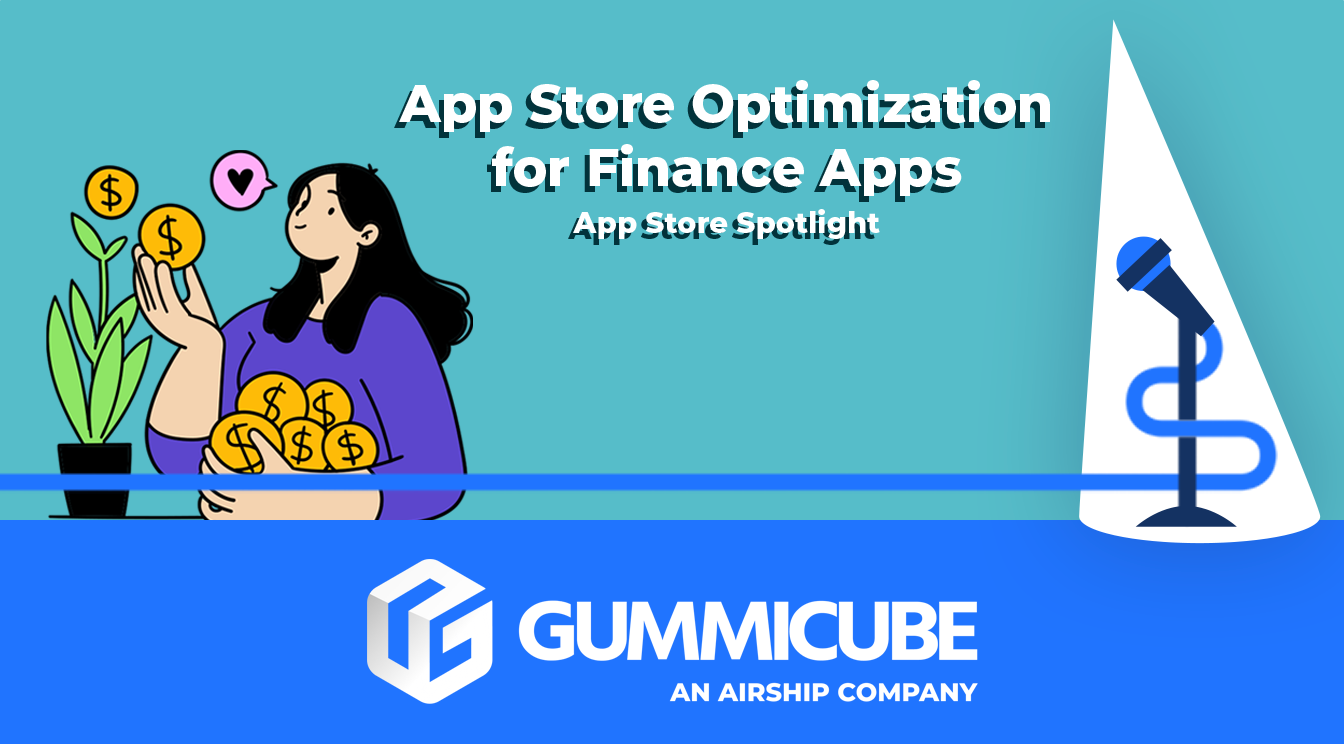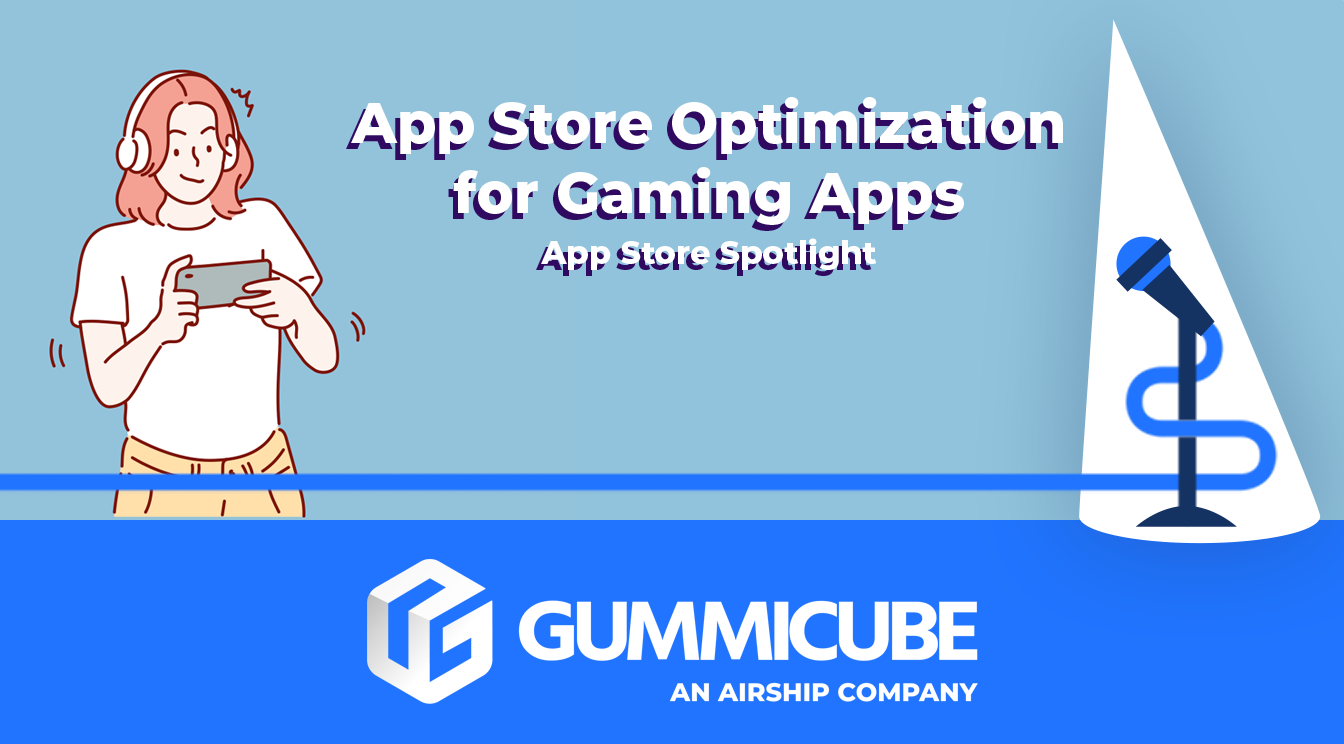Hulu App Store Spotlight
May 21st, 2019


by David Quinn
VP of Strategy & Partnerships at Gummicube, Inc.
Hulu is a video streaming website and app where users can watch original programming, live sports and licensed content. Recently, new buzz picked up around Hulu after Disney acquired the service. Buzz alone is not enough to drive app downloads, though – it also needs App Store Optimization. For this week’s App Store Spotlight, we take a look at Hulu and see how well its ASO works.
iOS
On the Apple App Store, Hulu is the #2 app in the Entertainment category, right behind Netflix. It’s the top-ranked app for terms like “apps for free movies,” “Disney movies for free,” and “Free TV show,” in addition to ranking in the top ten for valuable video terms like “movies” (#5),
and “free streaming” (#3). Hulu also ranks well for many competitor terms, such as “Redbox” (#6), “Tubi” (#9) and “Showtime” (#11). Its ranking gets a little lower for competitors like “Netflix” (#19), “xfinity” (#18) and “Nickelodeon” (#39), as well as terms like “TV app for iPhone” (#19), “trending news” (#22) and “TV movies” #23).
Creatives: Hulu’s screenshots utilize the same lime green background and white text as its icon, creating a color scheme and iconography distinct to the app. This is good branding, while the callout text is large enough to stand out in the screenshots and convey the message. The callout text is short and to the point, utilizing keywords like “Watch Live TV” and “Live Sports & News.”
Each screenshot shows a different aspect of the app, while the imagery includes popular shows that users may be searching for. For instance, the first screenshot shows the promotional image for “The Handmaid’s Tale,” while the screenshot listing “All Your Favorite Shows” includes popular shows like “Bob’s Burgers” and “House Hunters.”

While the creatives it includes display the app and its features, it only uses half of the screenshots it could. The remaining five screenshots could show the different genres of shows or movies it has available, including original programming, personalized profiles and so on. Having a variety of screenshots is also useful for Apple Search Ads, as it can display different creative sets for different sets of users, based their searches and tastes.
Additionally, the App Store listing does not have a video. As it is a streaming app, it could use the video to show quick clips from some of its popular original programming, similar to what HBO does on its HBO GO app. This would help illustrate the variety and quality of shows users can watch on the app while still only using in-app footage. It would have to use its original shows due to copyrights, but it could still showcase a number of shows that could draw in new users.
Title & Subtitle: The Hulu app’s full title is “Hulu: Watch TV Shows & Movies.” This uses 29 of the 30 characters it’s allowed, all of which are important keywords. At the same time, it quickly illustrates the value of the app to anyone searching the store. It’s a great use of the title space for both metadata and demonstrating value.
The subtitle, “Stream the Latest TV and Films” uses all 30 characters the App Store provides. As with the title, it uses important keywords while providing information about the app. It does repeat the “TV” keyword from the title, which is redundant for metadata purposes, but it is only a difference of 2 characters.
Overall, the title and subtitle are very effective for providing information about the app while simultaneously adding beneficial terms for keyword targeting.
Description: Hulu’s description, while it provides important information about the app, is not optimized for the Apple App Store. Descriptions for iOS devices should be written with short lines, no more than 1-2 sentences. This makes them easier to read on iPhone screens and provides pertinent information in bite-sized pieces that users can easily take in while scrolling.
Hulu’s description begins with an introduction that fills eight lines when viewed on an iPhone, so users will glance over it without taking in most of it. This could lead them to miss information on the original shows, Live TV and the size of Hulu’s video library.
The description itself is primarily focused on the different Hulu plans. While there is a bullet list of the app’s features, it’s a single list focused on the features that all subscription plans provide. Bullet lists are great for presenting features, but the one lengthy list could be split into a few smaller feature lists to provide more information. For instance, it mentions adding premium networks to the subscription and lists them in a single line; turning that into a “Premium Networks” section and listing each network in a separate bullet would make it easier for users to see the options while scrolling.
The feature sections for the various subscriptions (Hulu, No Ads, and Hulu + Live TV) are also presented as large paragraphs. These could also be split into bullet lists that present each of the features and benefits, such as “Stream over 85,000 episodes” and “Watch Live and on-demand TV.” That would quickly present the value of each subscription in an engaging manner.
Google Play
On the Google Play Store, Hulu is ranked #4 in the Entertainment category. It ranks #1 for a number of terms, including “stream app,” “TV series,” “watch shows” and “watch movie apps.” It also ranks well for several competitors, such as “HBO GO” (#5), “Tubi TV” (#6) and “Starz” (#10).
Its rankings begin to get a bit lower for terms like “Free movies” (#17), “online TV” (#15) and “TV online free” (#18). There are also some competitors it could improve its rankings for, such as “Showtime” (#39), “Amazon Video” (#31) and “Crunchyroll” (#21).
Creatives: Hulu’s creative set is slightly different on Google Play. Instead of the green and white color scheme, it uses a black background with green callout text. While this does help the text standout, it doesn’t match the iconography associated with the brand as well.
The screenshots use the same callout text, such as “All Your Favorite Shows” and “Live TV with 60+ Channels,” but they use different shows and screenshots for most of them. The first image still focuses on “The Handmaid’s Tale,” but later screenshots include listing shows and movies like “Family Guy” and “Shrek,” or channels like CNN. These do still provide useful information about the app and the shows it has available, although they don’t stand out as well with the darker colors.
As with iOS, the Google Play listing does not have a video. This could help it show some of the original shows it has to offer and the features the app provides; a good video can potentially increase an app’s conversions up to 25%.
Description & Metadata: On the Google Play Store, descriptions are crawled for metadata starting from the beginning of each line. Descriptions should utilize keywords there to index for them, as well as to instantly let users know what they’ll get from the app. Hulu uses the same description as it does on the Apple App Store, which means it’s not built for Google Play indexation.
While the description does still provide pertinent information about the app, it is not written in a way that focuses on keywords. It begins lines with terms like “You can even add Live TV” and “Create up to 6 personalized profiles,” which are not helpful for indexation.
Bullet lists are very useful for adding keywords in Google Play. Starting each bullet point with a keyword can indicate to Google’s algorithms that these are important terms. If the description were to expand its bullet list and turn its sections on the different subscription options into bullet lists, it could include keywords that it wants to improve its ranking for.
One thing that helps Hulu rank for all the keywords it does is its title and short description. The title, “Hulu: Stream TV, Movies & more” includes important keywords, while the description emphasizes them and adds terms like “Live TV.” While that definitely helps, it could improve its indexation and rankings further by incorporating the keywords it wants to target into its description.
Overall
What will happen to Hulu following its acquisition by Disney is anyone’s guess, but it’s positioning in the App Store is noteworthy. It utilizes valuable keywords in its title, as well as iOS subtitle and Google Play short description, to help it index for those terms and boost its rankings. The creative sets showcase the various shows and features users can enjoy from it, utilizing strong callout text that’s direct and keyword-friendly.
There is always room for improvement, and Hulu can start boosting its rankings and conversions by reworking its descriptions. The best practices for descriptions on the Apple App Store and Google Play Store are very different, so each one should be written with the store in mind. Doing so could help the app improve its keyword rankings even further.
Want more information regarding App Store Optimization? Contact Gummicube and we’ll help get your strategy started.
Similar Articles

Posted on April 5th, 2024
How can developers of journal apps optimize to stay relevant, differentiate themselves, and compete in the App Store? This App Store Spotlight jumps into some of the strategies employed by the top journal apps. Jump in to learn more.

Posted on March 15th, 2024
In this App Store Spotlight, we dive into the intricacies of optimizing finance apps and analyze the unique considerations of one of the most popular categories in the app stores.

Posted on February 23rd, 2024
Gaming is the largest category in the app stores by far. One out of every six games on the app stores is a mobile game, so how can you stand out from the competition? Find out in this App Store Spotlight.






